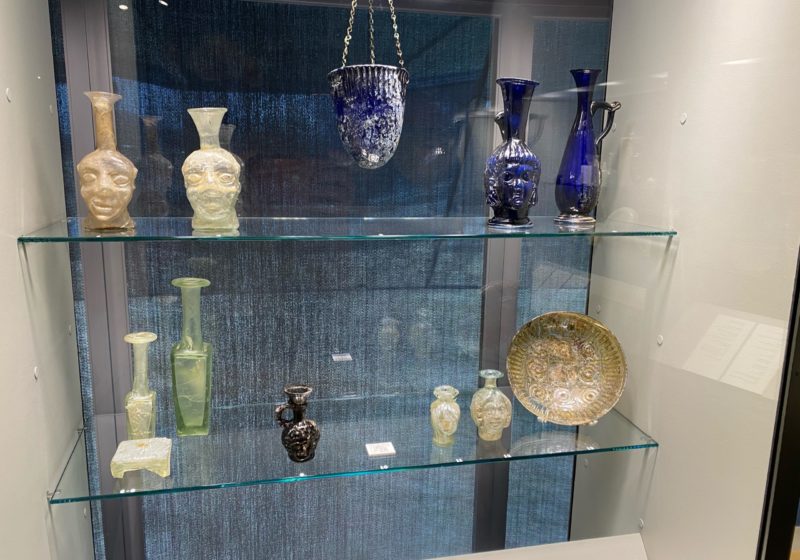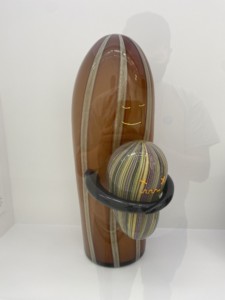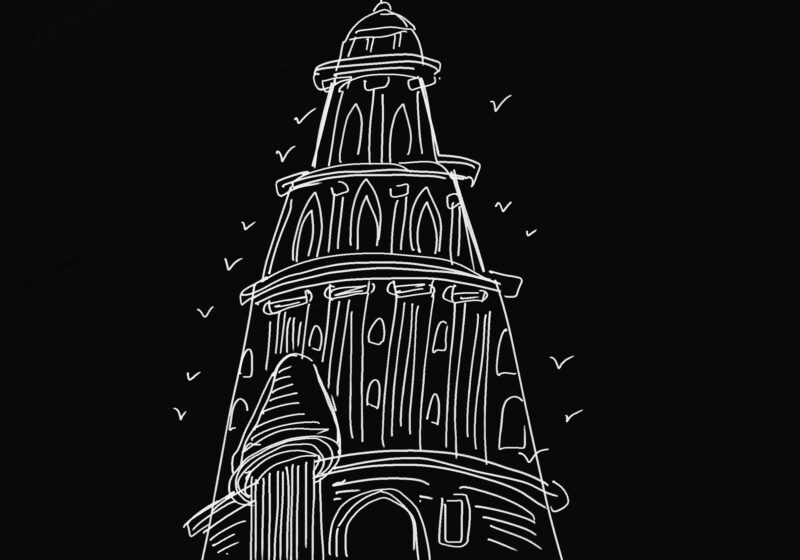The Corning Museum of Glass is probably the biggest attraction to see in the big town with the same name, located just 100 miles north of the Pennsylvania border.
Fortunately for me, the museum is exactly 99 miles away from campus, so I could go without exiting the 100 mile travel radius allowed by the school.
From the outside, the museum is both striking and unassuming. A white box with straight corners faces rows of nearly identical houses, reminiscent of the drawings of houses I made in kindergarten. The museum is the image of modern architecture with clean lines, large negative spaces, and huge windows. You enter through glass doors, and after undergoing a temperature check and picking up your timed tickets, you finally enter the contemporary art exhibit.
This part of the museum was fantastic and likely would have been enjoyable even to those who don’t particularly enjoy contemporary art. White walls carve the space up fluidly with gentle curves, and skylights allow the sun to illuminate the glass on display. A bowl of fruit, each one bigger than my (admittedly large) head, rests on the ground. Freeform, winding, flowing pieces of glass combine at just the right angle to suggest a shape. Many of the exhibits play with light, changing color from different angles, or creating the effect of a foggy morning. A particular highlight: Nocturne 5 by Karen LaMonte, a piece featuring a life size black dress, which felt almost like it was really made of fabric wrapped around a turning figure.
Just off of this area was the demonstration room. Here, two women worked in tandem to blow a glass vase in only a few minutes. It was remarkable how practiced their movements were individually and as a team. With only a handful of maneuvers, a lump of molten glass became beautiful glasswork.
Next, a bridge carried me to a section that seemed like it was designed to give further demonstrations of the modern history and processes of glassmaking. Unfortunately, this section was largely closed down, as many of the demonstrations and interactive exhibits couldn’t be operated safely during COVID-19.
The largest exhibit was the best. Starting with ancient Egypt, the exhibit is a circular tunnel that takes you through the history of glassmaking. First, simple perfume bottles, then mosaics, and eventually masterful works of Rome. You leave Italy to travel the world, seeing works from a variety of cultures before returning to the height of the Italian Renaissance, with the works of Venetian glassmakers. The historical section of the museum does a wonderful job walking you through not just the development of the craft of glassworking but also the ways that craft reflects cultural and political trends.
After the Renaissance, you begin to see more and more contemporary work. More modern Finnish artists, Steuben glass, the history of industrial glassmaking, and more. They start to blend together as the modern world allows for advancements, and creativity abounds.
A museum of glass certainly isn’t for everyone. If you aren’t particularly interested in the glass itself, but you do enjoy museum architecture, history, or contemporary art, then the Corning Museum of Glass is a great place to see all three. If any of this sounds appealing to you, and you don’t mind driving an hour and a half, it’s certainly worth a day trip.






